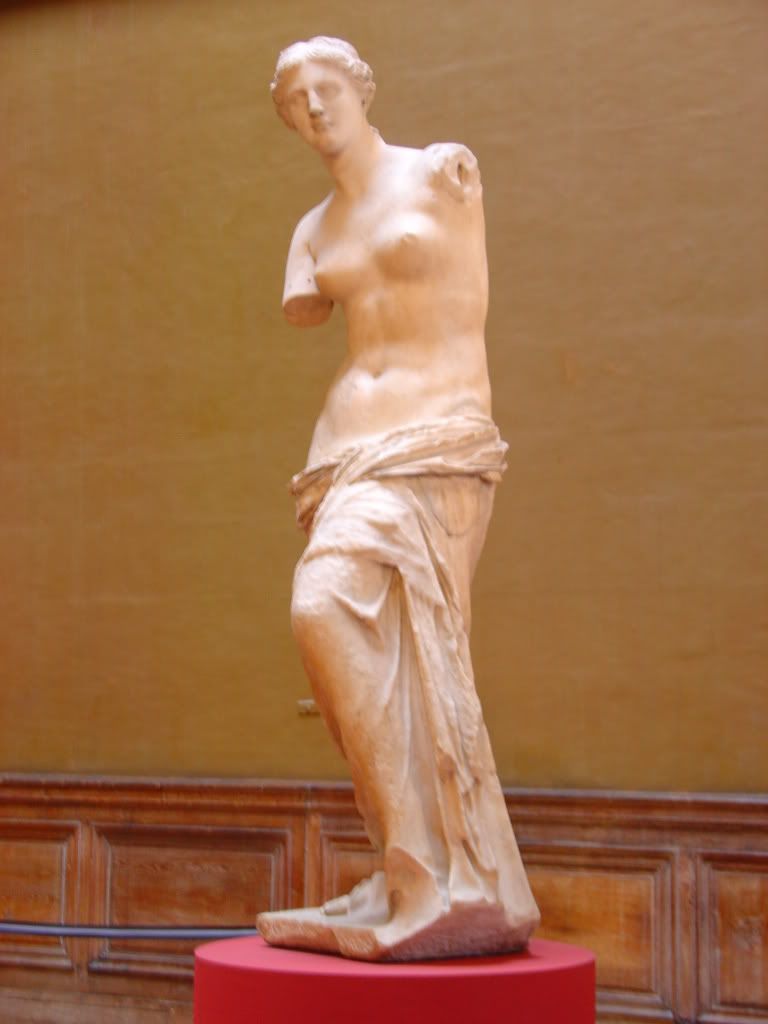Monday, August 8, 2011
Venus de Milo
Venus de Milo or Aphrodite of Milos is a marble statue of one of the most famous ancient Greek sculpture. And with her,Greek art gave birth to the Western art's female nudes. Because of some stylistic details it is indicated that it was created sometime between 130 and 100 B.C. and her naked torso it enabled the statue to be identified as the Greek goddess of love and beauty, Aphrodite (Venus to the Romans).However, her elongated silhouette, position in space and a very realist nudity, link this work to the Hellenistic era (323-331 B.C.), the last great era in Greek history. She stands at 6ft 8 in (203 cm). Her arms and original pedestal, with the original inscription attributing her to be the work of Alexandros of Antioch, have been lost to eternity. Venus de Milo is on display at the Louvre in Paris, France.
The Venus de Milo was discovered on April 8, 1820, in a buried niche, in the ancient city ruins of Milos on the Aegean Island of Milos by a farmer. She was found with the upper torso and draped legs along with several pillars topped with heads, fragments of the upper left arm and the left hand holding an apple and an inscribed pedestal. A French naval officer, Olivier Voutier, was exploring the island and with the help of the young farmer, proceeded to dig around the ancient ruins. Within a few hours Voutier uncovered Venus de Milo. Ten days later another French naval officer, Jules Dumont d'Urville, recognized the statues significance and arranged for its purchase by the French ambassador to Turkey.
However, news of her discovery took longer than expected to reach the French ambassador. Because of this the farmer grew tired of waiting and was also pressured to sell it to the Grand Dragoman of the Fleet, who was working as the translator for the Sultan Mahmud II in Constantinople, Turkey. But the representative of the French ambassador arrived just in time, because the statue was being loaded on a ship bound for Turkey and seized the statue and talked the chief citizens of Milos to annul the sell.
Upon the arrival of the statue to Louvre, it was reassembled, but the fragments of the left hand and arm were initially dismissed as a later restoration because of rough workmanship. Now it's accepted that the left arm and hand holding the apple were actually original to Venus de Milo but was not of the same quality of workmanship as the rest of her.
In the autumn of 1939, in anticipation of war breaking out, Venus de Milo was crated up and moved to a safer location in the French countryside by the Comedie-Francaise. During World War II the statue , along with Michelangelo's "Slaves" and " winged Victory of Samothrace were kept safe in the Chateau de Valencay.
.
Subscribe to:
Post Comments (Atom)



No comments:
Post a Comment